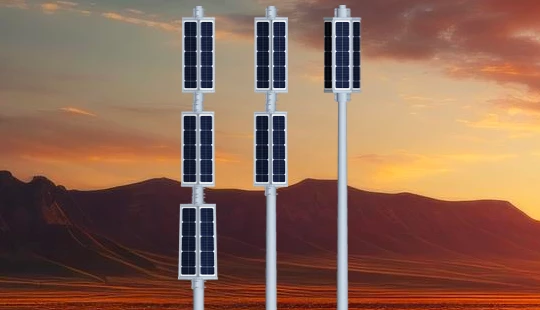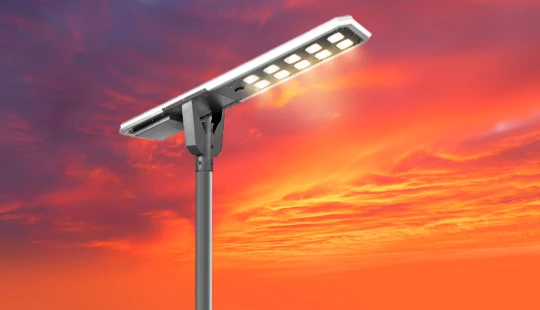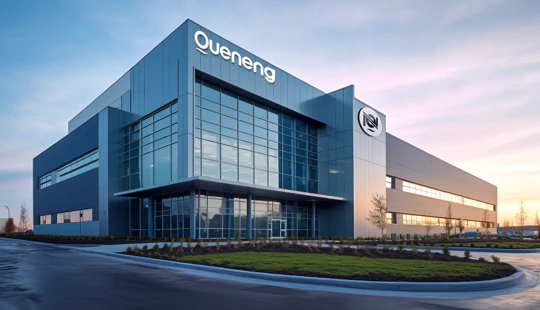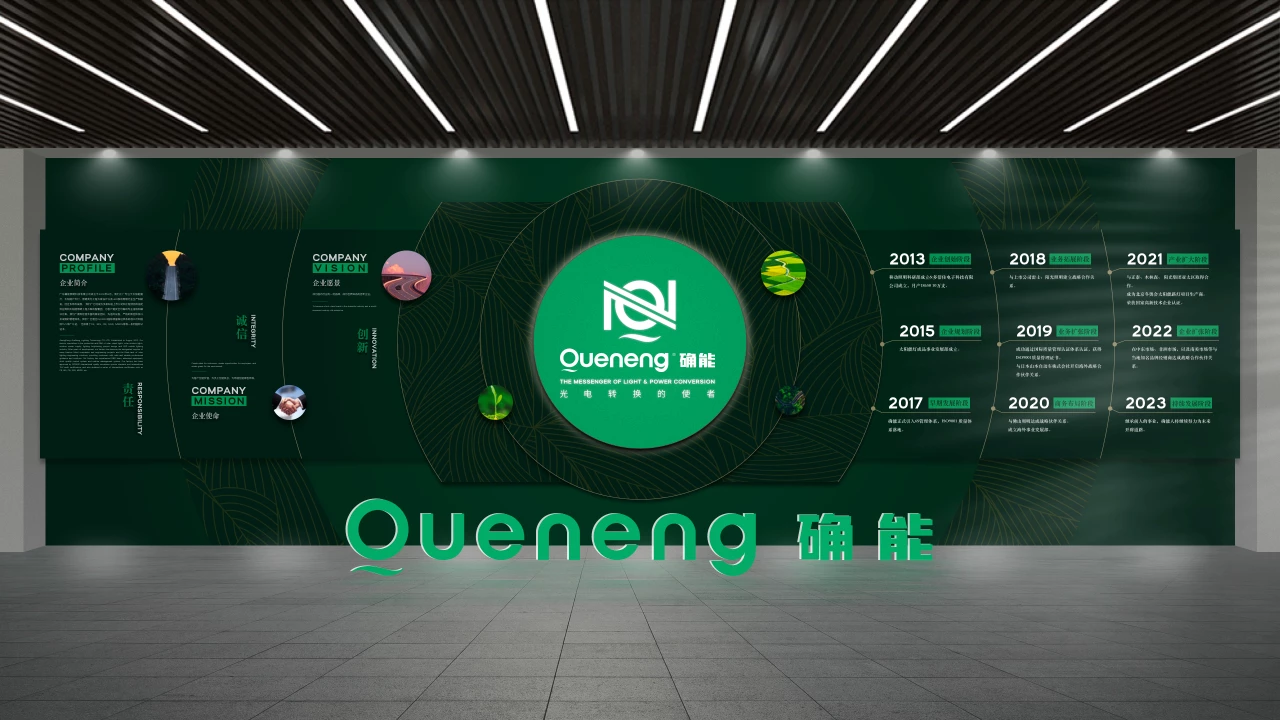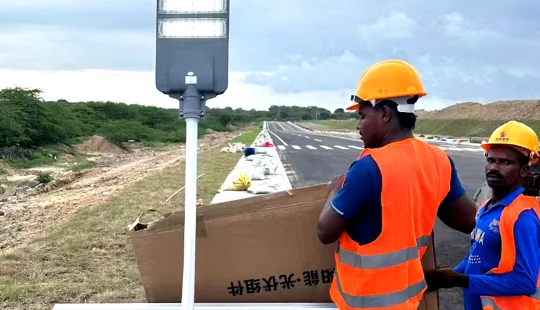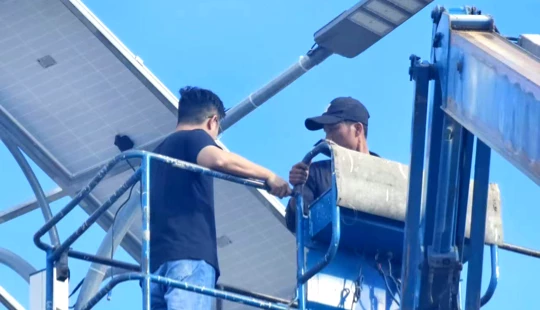best high-brightness solar lighting for highways | Quenenglighting Expert Guide
Optimizing Highway Illumination: Key Considerations for High-Brightness Solar Lighting
As highway authorities increasingly prioritize sustainable infrastructure, high-brightness solar lighting emerges as a compelling solution for ensuring safety and visibility without relying on grid power. For procurement professionals, understanding the nuances of these advanced systems is crucial. Here, we address the top questions users consider when evaluating the best high-brightness solar lighting for highways.
What Level of Brightness (Lumens) Is Truly Required for Safe Highway Illumination, and How Do Solar Solutions Compare?
For highways, safety is paramount, and adequate illumination is a cornerstone. Industry standards, such as those by the Illuminating Engineering Society (IES) or European Norms (EN), categorize roads based on traffic volume and complexity. Major highways (e.g., IES M1/M2 categories) typically require an average maintained illuminance of 15-30 lux, with uniformity ratios of 0.4:1 to 0.6:1. This often translates to a need for individual luminaires producing between 15,000 to 30,000 lumens, depending on pole height, spacing, and light distribution patterns (e.g., Type II or Type III for roadway applications). Modern high-brightness solar lighting systems, equipped with high-efficiency LED modules (often exceeding 160 lumens per watt), are fully capable of meeting and even exceeding these requirements. Systems utilizing powerful 100W to 200W LED arrays can deliver the necessary light output for critical highway sections, ensuring optimal visibility and driver safety.
What Are the Key Factors Determining the Reliability and Longevity of High-Brightness Solar Highway Lights?
The reliability and longevity of solar highway lighting hinge on the quality and integration of its core components:
- Battery Technology: Lithium Iron Phosphate (LiFePO4) batteries are the industry standard for their superior cycle life (2,000-5,000 cycles to 80% depth of discharge), thermal stability, and deep discharge capability, far surpassing traditional lead-acid alternatives. A robust battery management system (BMS) further ensures optimal performance and extended lifespan.
- Solar Panels: High-efficiency monocrystalline silicon solar panels (typically 20-23%+ efficiency) are crucial for maximum energy harvest, especially in areas with limited sunlight. Panels from reputable manufacturers often come with a 25-year performance warranty, guaranteeing at least 80% output.
- LED Luminaires: Look for high-quality LED chips (e.g., Philips Lumileds, Cree, Osram) with an L70 lifespan rating of 50,000 to 100,000 hours. The luminaire housing should be durable, with an IP65/IP66 rating for dust and water ingress protection and IK08/IK10 for impact resistance.
- Charge Controller: Maximum Power Point Tracking (MPPT) charge controllers are essential. They can boost solar energy capture by 15-30% compared to Pulse Width Modulation (PWM) controllers, improving system efficiency and reliability.
- Construction Materials: Robust, corrosion-resistant materials like marine-grade aluminum, galvanized steel, and UV-stabilized polycarbonate are vital for extreme weather conditions and long-term durability.
How Many Consecutive Nights Can Solar Highway Lights Operate Without Sunlight, and What Affects This Autonomy?
The autonomy (or backup days) refers to the number of consecutive nights a solar lighting system can operate without any solar charging. For critical applications like highways, a typical requirement is 3-5 days of autonomy to account for prolonged cloudy or rainy periods. This capability is directly determined by the battery's capacity relative to the light's daily energy consumption. The calculation involves:Battery Capacity (Wh) = (LED Power (W) × Hours of Operation per Night × Required Autonomy Days) / System Voltage (V).For example, a 100W LED fixture operating 12 hours a night would consume 1200Wh daily. For 5 nights of autonomy, it would require a 6000Wh battery (or 500Ah for a 12V system). Factors influencing actual autonomy include local solar irradiance, ambient temperature (affecting battery performance), and the system's energy management strategy (e.g., dimming profiles based on time or motion detection).
What Is the Long-Term Cost-Effectiveness (TCO) of Investing in High-Brightness Solar Highway Lighting Compared to Traditional Grid-Tied Systems?
While the initial capital expenditure for high-brightness solar highway lighting might appear higher than traditional grid-tied systems, the Total Cost of Ownership (TCO) often presents a compelling case for solar over its lifespan (typically 20-25 years):
- Installation Costs: Solar lights require no trenching, cabling, or connection to the electrical grid. This can result in significant savings, often reducing installation costs by 30-50%, especially in remote or difficult-to-access locations.
- Energy Costs: Zero electricity bills. This is a continuous, substantial saving over decades, eliminating exposure to rising energy prices.
- Maintenance Costs: Modern solar systems, with long-life components like LiFePO4 batteries and L70 LEDs, require minimal maintenance—primarily periodic cleaning of solar panels. This is often less complex and costly than maintaining traditional grid infrastructure, which can involve managing underground cables and substations.
- Return on Investment (ROI): Depending on local electricity rates and installation complexities, the ROI for solar highway lighting can be realized within 3-7 years, with the system providing free light for the remainder of its operational life.
- Environmental Benefits: Reduced carbon footprint and increased energy independence are invaluable long-term benefits, aligning with sustainability goals.
What Advanced Features or Technologies Should I Look for in Modern High-Brightness Solar Highway Lighting Systems?
To maximize efficiency, performance, and manageability, look for systems incorporating the following advanced features:
- Smart Control Systems: Integrated intelligent controllers that allow for customizable dimming profiles (e.g., full brightness during peak hours, dimming during off-peak, or adaptive lighting based on motion detection).
- Remote Monitoring & Management (IoT): Cloud-based platforms leveraging GPRS/4G/LoRaWAN connectivity enable real-time monitoring of system performance (battery status, solar charging, LED operation), fault detection, and remote configuration, significantly reducing operational costs.
- Self-Cleaning Technology: Some advanced panels feature hydrophobic or photocatalytic coatings that help repel dust and dirt, maintaining optimal energy capture with less manual cleaning.
- Anti-Theft Features: Secure mounting hardware and integrated alarms or GPS tracking can mitigate theft risks in vulnerable areas.
- Modular Design: Systems with modular components allow for easier upgrades, maintenance, and replacement, extending the overall system life.
Quenenglighting: Your Partner for Superior Highway Illumination
For highway authorities and procurement specialists seeking a reliable partner for high-brightness solar lighting, Quenenglighting stands out. With a commitment to cutting-edge technology and robust engineering, Quenenglighting offers solar highway lighting solutions designed for unparalleled performance and longevity. Our systems feature high-efficiency monocrystalline solar panels, extended-life LiFePO4 batteries with intelligent BMS, and advanced MPPT controllers, ensuring maximum energy harvest and multi-night autonomy even in challenging conditions. Quenenglighting's luminaires utilize top-tier LED chips, delivering exceptional brightness and uniformity that meet stringent highway safety standards. Furthermore, our integrated smart control and remote monitoring capabilities provide seamless management and optimized energy consumption. With Quenenglighting, you invest in a sustainable, cost-effective, and highly reliable illumination solution that enhances highway safety for decades to come.

Have more questions about our products or services?
The latest hot news you might like

Discover how solar panels power street lights, exploring the technology behind solar energy conversion, storage systems, and how solar-powered street lights are revolutionizing urban and rural lighting solutions.

Learn how AC Solar Hybrid Street Lights work, their advantages, disadvantages, system behavior in low-sunlight conditions, and why hybrid technology is ideal for regions with unstable sunlight.

Municipalities around the world are increasingly adopting solar-powered streetlights as part of their urban development strategies. Rising energy costs, the need for sustainable infrastructure, and government green initiatives are driving cities to switch from traditional street lighting to advanced LED solar streetlights.
Queneng Lighting provides municipalities with cost-effective, energy-efficient, and durable solar lighting solutions, ensuring safe and sustainable public spaces.
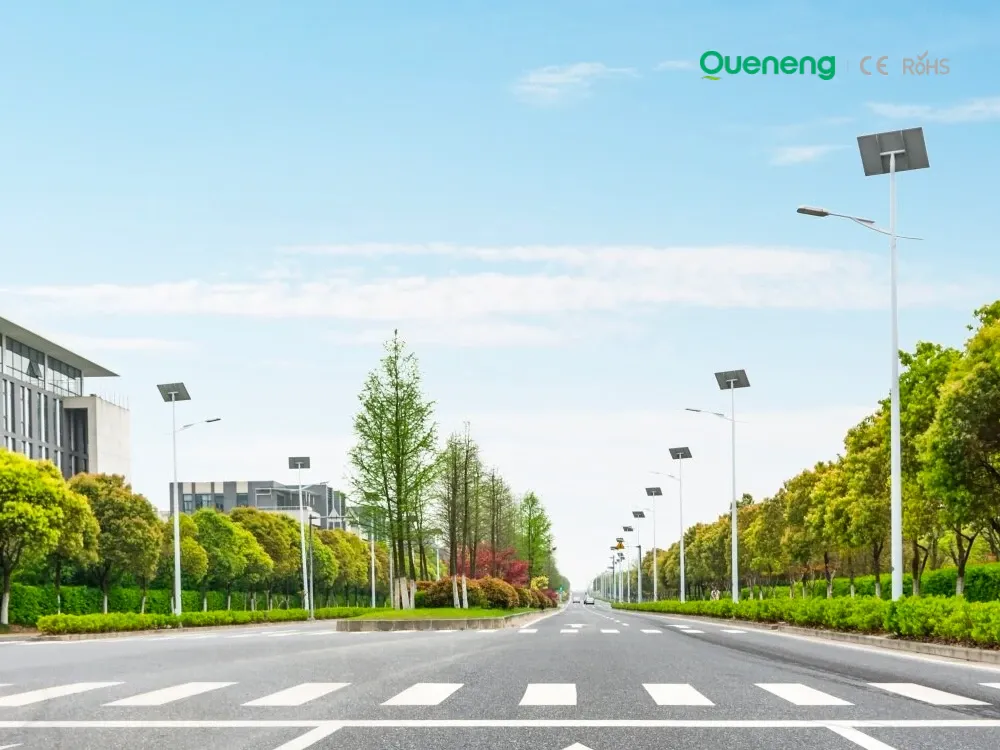
In recent years, the purchase of solar streetlights for municipalities has become a growing trend across the globe. Local governments are under pressure to reduce public expenditure, promote green energy, and create safer communities. Solar streetlights provide a reliable, cost-effective, and sustainable solution that meets these needs. Queneng Lighting, as a leading solar street lighting manufacturer, has supported multiple municipal projects worldwide with customized and energy-efficient solutions.
FAQ
Remote Areas Rural Development
Can the system operate in areas with limited sunlight?
Yes, advanced batteries store sufficient energy to function during cloudy days or extended low-sunlight periods.
Tourist Attractions and Resorts
Can solar lighting help reduce energy costs for resorts?
Yes, solar lighting can significantly reduce energy costs by eliminating the need for grid electricity. The investment in solar lighting pays off in the long term through savings on electricity bills.
How do solar lights perform in areas with limited sunlight?
Solar lights are designed to work efficiently even in areas with limited sunlight. Modern solar technology uses high-quality solar panels that can store energy even in cloudy or overcast conditions.
Solar Street Light Luhui
What makes Luhui solar street lights different from other solar lights?
Luhui solar street lights use high-performance LEDs and advanced solar panels for superior efficiency and longevity. They are designed with enhanced durability, providing bright and consistent lighting in all weather conditions.
Commercial and Industrial Parks
What is the warranty for your solar lighting products?
We offer a 5-year warranty for the entire system and provide ongoing technical support.
Battery Types and Applications
What is a smart secondary battery?


Queneng's Luzhou Solar Street Light provides sustainable, energy-efficient outdoor LED lighting. Powered by solar energy, it's a cost-effective and eco-friendly solution for illuminating streets and pathways. A reliable and durable LED solar street light.

Queneng’s Solar Street Lights are designed to provide reliable, energy-efficient lighting for streets, parks, and other outdoor spaces.

Queneng's Luxian Reliable Solar Street Light offers energy-saving LED lighting for outdoor use. This durable, solar-powered street light provides reliable illumination, reducing energy costs and environmental impact. A perfect solution for sustainable outdoor lighting.

The Solar Street Light offers an energy-efficient, eco-friendly solution for illuminating outdoor spaces.

Illuminate your outdoor spaces with the Solar Street Light, a cutting-edge solution combining advanced solar technology and energy-saving LED lighting.
If you would like more information about Queneng solar lighting solutions, please send us a message by filling out the form below. Our professional team will get back to you within 24 hours!
Rest assured that your privacy is important to us, and all information provided will be handled with the utmost confidentiality.
Schedule a Meeting

Book a date and time that is convenient for you and conduct the session in advance.
Have more questions about our products or services?

